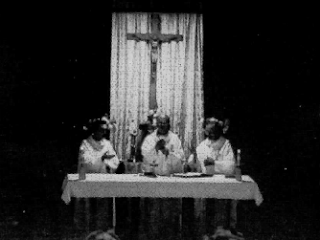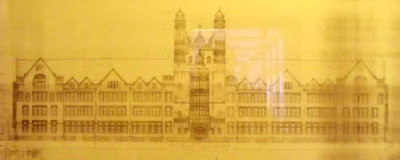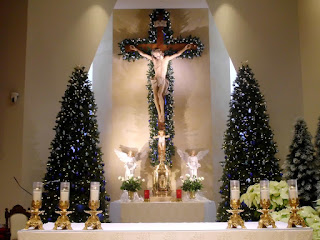The parish worshipped at Thurston High School until a church could be built. Msgr. Hardy, pastor of Sacred Heart Parish in Dearborn, led the groundbreaking ceremony on June 30, 1957.
The first Mass at St. John Bosco Church was on Christmas Eve, 1957, though construction was not yet finished.
Cardinal Mooney finally dedicated St. John Bosco Church on September 16, 1958, more than two years after the parish was established.
A parish school opened four years later with classes starting on September 10, 1962. Two lay teachers and two Adrian Dominican Sisters taught grades one, two and three. The following year, another Dominican sister joined the faculty. Sr. Margaret Joseph was the first principal.
St. John Bosco Parish celebrated it's 60th anniversary in 2016. Throughout the parish's 62-year history, there have been only three pastors: Fr. Leo Sheltreau (1956-1980), Fr. Michael Kundrat (1980-1984), and Fr. Richard Osebold (1984-present). However, the parish went through a series of a dozen associates and weekend associates. Both Fr. Sheltreau and Fr. Kundrat served at St. John Bosco until their respective retirements. It is likely that Fr. Osebold will also continue to minister at the parish until his retirement.
Fr. Osebold was previously the Dean of Studies at Sacred Heart Seminary, where he also taught Latin and Greek for two decades. He also served as a weekend assistant at St. John Bosco before he was appointed pastor.
The parish once had 700 registered families but, at last count, numbered about 250. St. John Bosco clustered with St. Hilary and St. Robert Bellarmine in 2012. St. Hilary closed on June 29, 2014, but the other two remain clustered even though each has it's own pastor and parish staff.
A statue of St. Hilary, reclaimed from the now-closed St. Hilary Church, is suspended near the main entrance of St. John Bosco, next to a statue of the other namesake.
Madonna and Child as well as St. Joseph in the back, left side of the church.
Most of the windows are common, clear glass. However, the windows above the main altar are stained-glasses. The Holy Trinity is depicted in the center window: the Hand of God the Father, the Agnus Dei, and Holy Spirit in the form of a dove.
A chapel stands behind the main altar, where daily Mass is celebrated every weekday except Thursday. Monday Mass is at 9:00am while Tuesdays, Wednesdays, and Fridays bring Mass at 8:30am. Tuesday Mass is preceded by Mother of Perpetual Help devotions at 8:15am and followed by Adoration of the Blessed Sacrament, 9:00am-7:00pm.
Fr. Osebold is assisted by two permanent deacons: Rev. Mr. Robert Modes and Rev. Mr. Ziggy Kucharek. Saturday Vigil Mass is at 4:00pm, preceded by Confessions at 3:00pm, while Sunday Masses are at 9:00am and 11:00am.
More info: parish website + bulletin archive
More photos: AOD Film Services
More images of the stained-glass windows: Dawn's Art


















































































